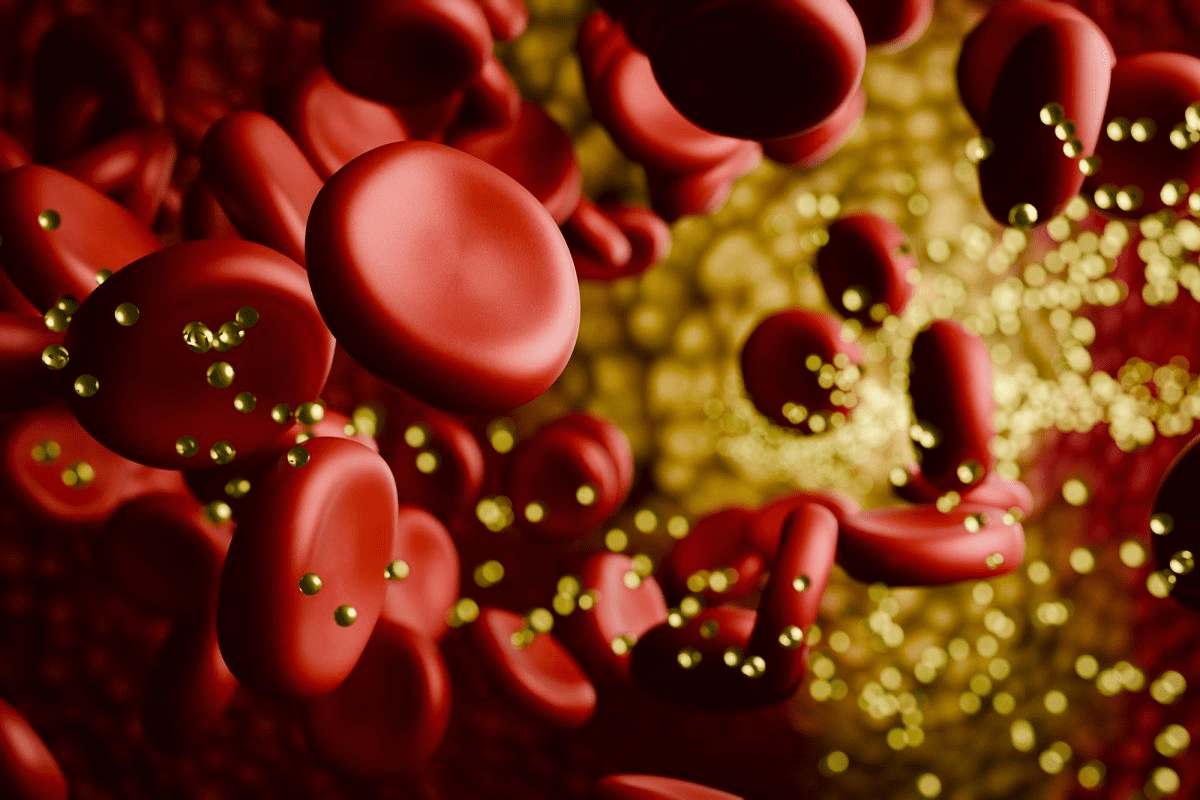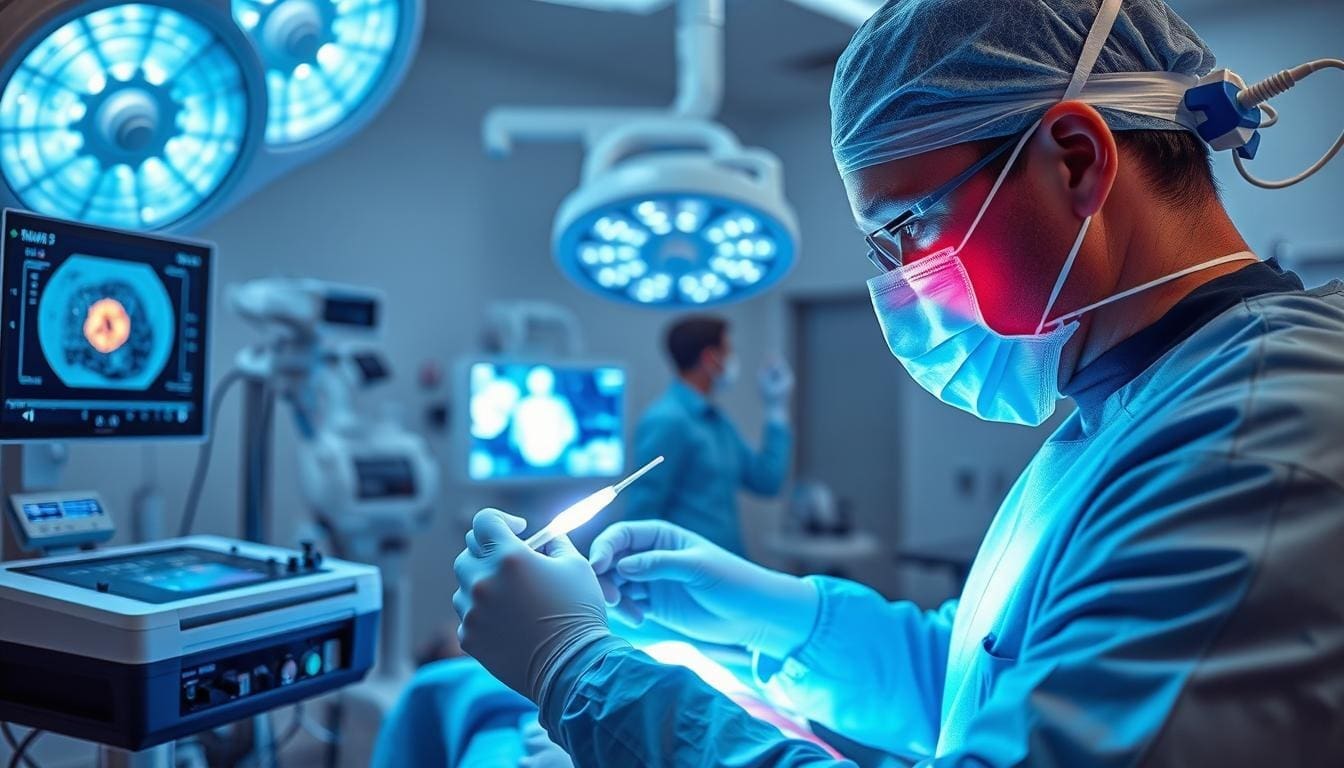Last Updated on November 27, 2025 by Bilal Hasdemir
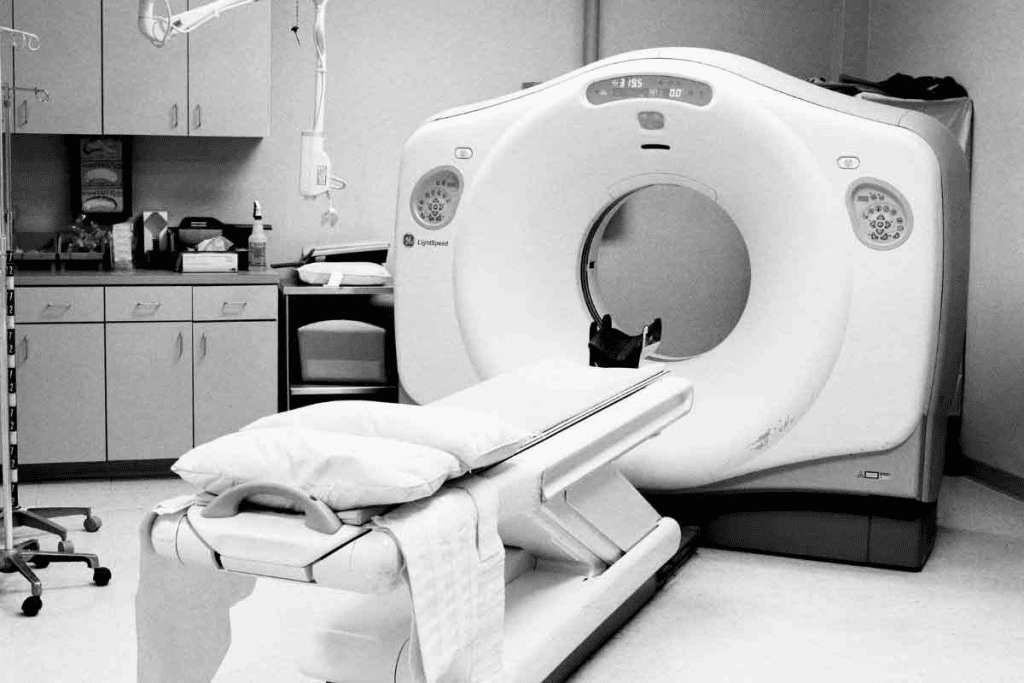
We count on advanced medical imaging to give us top-notch healthcare. The CT scan is a key tool, using X-rays and computers to show detailed body images.
Knowing about ct scan machine pictures helps us see the complexity and innovation in medical diagnostics. At Liv Hospital, we focus on patient safety and use the latest CT technology. This helps us make accurate diagnoses and treatment plans.
Looking at detailed images of CT scan equipment shows how these machines are changing healthcare diagnostics. In this article, we’ll show 15 key images and views. They highlight what CT scan machines can do. View pics of CT scan machine and its interior! See 15 essential images and learn about the different views in computed tomography.
Key Takeaways
- CT scans use X-ray technology to create detailed body images.
- Understanding CT scan machine pictures is vital for medical diagnostics.
- Liv Hospital is dedicated to patient safety and advanced CT technology.
- Detailed images of CT scan equipment reveal innovations in healthcare diagnostics.
- CT scan machines are changing modern healthcare with their diagnostic abilities.
The Evolution of CT Scanning Technology
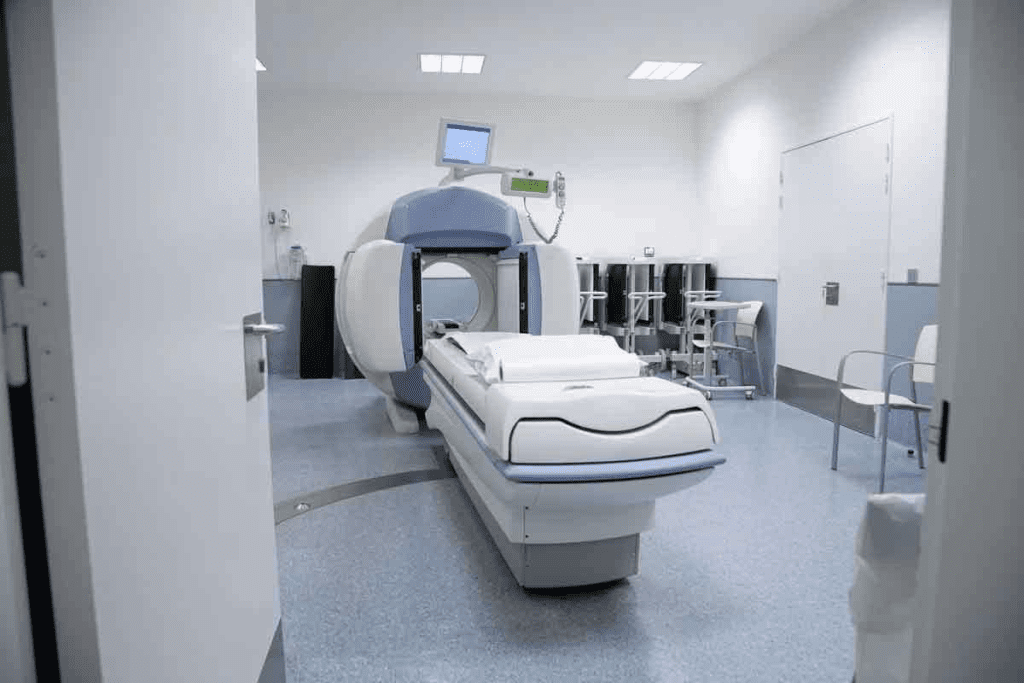
CT scanning technology has changed a lot over the years. It has gotten better at helping doctors diagnose diseases. We’ve moved from simple single-slice detectors to advanced multi-slice detectors today.
From Single-Slice to Multi-Slice Detectors
The shift to multi-slice detectors was a big step forward. Multi-slice detectors make scans faster and images clearer. This means doctors can spot problems more easily and plan treatments better.
How Modern CT Scanners Create Diagnostic Images
Modern CT scanners use X-ray technology and smart computer programs to make images. They spin around the patient, taking pictures from many angles. Then, these pictures are put together to show detailed views of inside the body.
The use of advanced reconstruction algorithms and high-speed data processing has improved image quality. These tools help doctors see tiny details. This helps in finding and treating diseases early.
External Views: Pics of CT Scan Machine Components
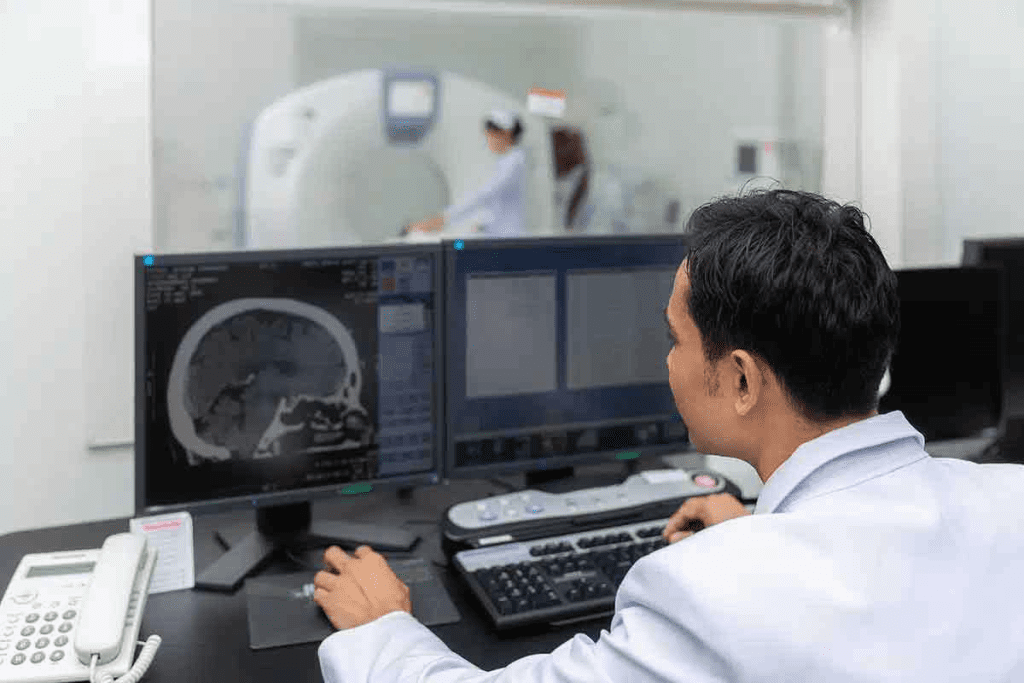
CT scan machines have several key parts outside that are vital for their work and patient care. We’ll look at these parts closely to see why they matter.
Gantry Structure: Housing the Scanning Technology
The gantry is a key part of a CT scan machine. It holds the tech that takes pictures of the body. It moves around the patient, fast, to get the data needed for detailed images.
Key features of the gantry structure include:
- Large aperture to fit different patient sizes
- High-speed rotation for quick scans
- Integrated detectors for X-ray data capture
Patient Table and Positioning Systems
The patient table is also very important. It’s made for safe and precise patient placement during scans. Modern CT scanners have advanced tables with:
- Motorized movement for smooth, controlled positioning
- Adjustable height and tilt for better patient comfort and access
- Integrated laser alignment systems for precise positioning
These features help ensure patients are in the right spot for the scan. This is key for getting top-quality images.
Operator Console and Control Room Setup
The operator console is where the CT scan is controlled and watched. It has:
- High-resolution display monitors for image review
- Advanced software for choosing scan protocols and reconstructing images
- Control panels for adjusting scan settings and starting scans
We count on these parts working together to give us top-notch diagnostic images. They make sure the scanning process goes smoothly for patients and operators alike.
Inside the Gantry: Critical Internal Components
Inside a CT scanner’s gantry, several key parts work together. They are vital for creating detailed images. These components help the machine make high-quality images for diagnosis.
X-Ray Tube and Detector Array Configurations
The x-ray tube and detector arrays are key to CT scanning. The x-ray tube makes x-rays that go through the patient’s body. The detector arrays catch these x-rays and turn them into electrical signals. These signals help create the images we see.
How these parts are set up is very important for image quality. Modern CT scanners use dual-source technology. This technology makes scanning faster and images clearer.
Slip Ring Technology in Modern Scanners
Slip ring technology is key for the gantry’s continuous rotation. This allows for quicker and more efficient scans. It also means no cables need to be wound and unwound, which helps the machine last longer.
Slip ring technology helps modern CT scanners take fast images. This is important for seeing moving parts like the heart clearly.
Cooling Systems for Continuous Operation
CT scanners get very hot, mainly from the x-ray tube. Good cooling systems are needed to keep the machine running well. These systems help get rid of heat, so the scanner doesn’t overheat.
Modern CT scanners have better cooling systems. This means they can scan for longer without stopping. It also helps them see more patients, making things more efficient.
Premium CT Scanner Models Visualized
We look at the latest premium CT scanners changing diagnostic imaging. These top machines use the latest tech. They give doctors the tools for precise diagnoses.
Siemens SOMATOM Force: Dual Source Technology
The Siemens SOMATOM Force is a top CT scanner. It has dual source technology for fast, detailed imaging. This tech lets it take images from two angles at once, making them clearer.
GE Revolution EVO: High-Speed Imaging Capabilities
The GE Revolution EVO is another leading CT scanner. It’s known for high-speed imaging. Its advanced tech and quick rotation times mean faster scans for patients.
Advanced Features of Latest Generation Scanners
The newest CT scanners, like the Siemens SOMATOM Force and GE Revolution EVO, have many advanced features. They include advanced reconstruction algorithms, high-resolution imaging, and improved patient comfort. These features are making diagnoses more accurate and quicker.
These CT scanners are making patient care better too. They reduce scan times and improve image quality. As tech keeps getting better, we’ll see even more advanced features in future scanners.
Technical Specifications in CT Machine Images
Understanding the technical specs of CT machines is key to seeing their power. These specs are what make today’s CT scanners work well in medical imaging.
Multi-Slice Detector Arrays
Modern CT machines have multi-slice detector arrays, with some having up to 384 slices. This lets them scan faster and get clearer images. The ability to capture multiple slices at once boosts the scanner’s ability to diagnose, helping doctors find problems faster and more accurately.
“The introduction of multi-slice CT scanners has been a game-changer in diagnostic imaging,” as noted by industry experts. “It has enabled faster and more detailed scans, improving patient outcomes.”
Rapid Rotation Times
Rapid rotation times are a key feature of modern CT machines. Some can rotate as fast as 0.25 seconds, making scans quicker and reducing motion issues. This speed, along with advanced algorithms, gives clearer images even for moving patients.
Large Gantry Apertures
Large gantry apertures, up to 78 cm in some models, offer more room for patients. This is great for bigger patients or those needing special scans. A bigger gantry also makes it easier to use advanced imaging for heart or blood vessel studies.
In summary, the tech specs of CT machines, like multi-slice arrays, fast rotation, and big gantries, are key to their success. As tech gets better, we’ll see even more improvements, helping patients and doctors alike.
Patient Positioning Technology Illustrated
Getting accurate CT scans is key, and we’ve made big steps forward. Our advanced patient positioning tech is key for both comfort and scan quality.
3D Positioning Laser Systems in Action
Our CT scanners use 3D positioning laser systems for precise patient alignment. These systems project laser lines on the patient’s body. This makes positioning accurate and scan ranges reproducible. It also makes scanning more efficient and improves patient results.
The benefits of 3D positioning laser systems include:
- Improved accuracy in patient positioning
- Enhanced reproducibility of scan ranges
- Reduced scan times due to more efficient setup
Ergonomic Table Design for Patient Comfort
The ergonomic table design is also vital. Our CT scanner tables are made for patient comfort and scan quality. They have adjustable height, comfy padding, and secure restraints to keep patients steady during scans.
| Feature | Description | Benefit |
| Adjustable Height | Table height can be adjusted to accommodate different patient sizes and needs. | Enhanced patient comfort and accessibility |
| Comfortable Padding | Ergonomically designed padding to reduce patient discomfort during scans. | Improved patient experience and reduced anxiety |
| Secure Restraints | Safe and adjustable restraints to minimize patient movement. | Increased scan accuracy and reduced need for repeat scans |
Specialized Positioning Accessories
We also have specialized positioning accessories to help with patient positioning. These include headrests, knee supports, and more. They’re made for specific patient needs or scan types.
By using these technologies and accessories together, we greatly improve CT scan accuracy and comfort. This leads to better patient results.
Control Systems and User Interfaces
Modern CT scanners use advanced control systems for safe and efficient use. These systems help doctors get high-quality images while keeping radiation exposure low.
Remote Control Panels and Touchscreens
CT scanners have remote control panels and touchscreens. These let operators control the scanner from a distance, reducing radiation exposure. The touchscreens make it easy to adjust settings, check patient data, and see images live.
Advanced remote control capabilities let operators fine-tune scans for the best image quality. This is key for detailed scans like those of the heart or blood vessels.
Powerful Generators (Up to 240 kW)
CT scanners need strong generators for clear images. Modern ones can produce up to 240 kW, speeding up scans and improving image quality. This is great for patients who can’t stay perfectly steady.
The high-power capability of these generators also supports advanced scans. These scans, like dual-energy CT and perfusion studies, offer important details for treatment plans.
Emergency Controls and Safety Features
Safety is top priority in CT scanner design. Emergency controls are part of the interface, allowing quick action in case of a problem. These controls can stop the scan and adjust the table.
Safety features prevent accidental radiation exposure. For example, interlocks ensure the scanner only starts when everything is set up right and the patient is in place.
Advanced Scanning Capabilities Shown in Images
Modern CT scanners have changed how we do diagnostic imaging. They come with advanced features that make diagnoses more accurate and care better.
Adaptive 4D Spiral Scanning Technology
Adaptive 4D spiral scanning is a big leap in CT scanner technology. It lets scanners scan continuously without moving the table. This means they can catch dynamic processes in real-time.
This technology is great for heart scans. It shows how the heart moves and works. It’s also good for people with irregular heartbeats or trouble holding their breath during scans.
Cardiac and Vascular Imaging Features
Modern CT scanners have special features for heart and blood vessel scans. They can show the heart’s motion clearly. They also have algorithms that make images clearer, helping doctors spot heart problems better.
These features are key for diagnosing heart disease and checking how well the heart works. They also help doctors see blood vessel problems early on.
Dual Energy CT Applications
Dual energy CT is another big step in CT technology. It uses two X-ray energies to get more detailed tissue information. This is useful for spotting kidney stones, gout, and liver iron levels.
Dual energy CT also makes images clearer, helping doctors see problems better. It can even cut down on the need for more tests, making care faster and better.
Radiation Dose Optimization Technologies
Modern CT scanning has made big steps in reducing radiation doses. This makes imaging safer for patients everywhere. It’s key to cut down radiation while keeping image quality high.
Iterative Reconstruction Techniques Visualized
Iterative reconstruction has changed CT image processing. It cuts down on noise and artifacts, making images clearer at lower doses. These methods refine images step by step, leading to big dose cuts without losing quality.
Visuals of these techniques show how they improve image clarity. They help doctors understand the images better, making diagnosis easier.
Dose Modulation Systems in Modern Scanners
Dose modulation systems are key in today’s CT scanners. They adjust the radiation dose based on patient size and scan area. This ensures patients get the least radiation needed for quality images.
These systems have greatly lowered radiation for CT scan patients. They’re very helpful for kids and for scans needing repeated images.
Pediatric Protocol Adaptations
Adapting protocols for kids is vital to lower radiation exposure. Kids are more sensitive to radiation and need special scans. Modern CT scanners have protocols for kids, adjusting doses based on age, size, and weight.
These adaptations help reduce radiation doses and keep image quality high. Lower doses for kids reduce radiation risks, protecting them better.
Multimodal Imaging Integration
Multimodal imaging integration is changing how we diagnose diseases. It combines different imaging methods. This gives us a clearer picture of what’s happening inside the body. It helps doctors make more accurate diagnoses and better treatment plans.
PET-CT Combined Systems
PET-CT systems are a big step forward in medical imaging. They mix the detailed pictures from Computed Tomography (CT) with the metabolic activity from Positron Emission Tomography (PET).
- Enhanced Diagnostic Accuracy: This mix lets doctors see both the body’s structure and its metabolic activity. It helps them diagnose and stage diseases more accurately.
- Cancer Staging and Monitoring: PET-CT is key in cancer care. It helps stage cancers precisely and track how treatments are working.
- Personalized Medicine: The detailed info from PET-CT helps tailor treatments. This approach can lead to better patient outcomes.
CT Integration in Interventional Suites
Adding CT to interventional suites has changed minimally invasive procedures. It allows for real-time imaging. This makes procedures more precise and safer.
- Real-time imaging guidance during procedures
- Improved accuracy in complex interventions
- Reduced risk of complications
Mobile CT Solutions for Critical Care
Mobile CT solutions bring advanced imaging to critical care areas. This includes ICUs and emergency departments. It’s vital for patients who can’t move easily.
- Critical Care Imaging: Mobile CT scanners help diagnose critically ill patients quickly. This speeds up decision-making.
- Flexibility and Accessibility: These units can go right to the patient. This reduces risks from moving them.
- Emergency Response: In emergencies, mobile CTs offer quick imaging. This is critical for assessing acute conditions.
Conclusion: The Future of CT Imaging Technology
CT scan machines have evolved a lot. They now provide detailed images that help doctors make accurate diagnoses. This has changed how we approach healthcare.
New technologies will make CT scans even better. We can look forward to clearer images and less radiation. These changes will help doctors treat patients more effectively.
Companies like Siemens and GE Healthcare are leading the way. They are creating advanced CT machines. These machines will help us see even more in medical imaging.
We’re excited for what the future holds. With ongoing advancements, CT imaging will keep improving. This will lead to better care for patients everywhere.
FAQ
What is a CT scan machine and how does it work?
A CT scan machine, also known as a CT scanner or CAT scanner, is a medical device. It uses X-rays and computer tech to make detailed images of the body. The machine rotates an X-ray tube and detector around the patient, capturing data to create images.
What are the main components of a CT scan machine?
The main parts of a CT scan machine include the gantry, which has the X-ray tube and detector. There’s also the patient table that moves the patient through the gantry. The operator console is where the technologist controls the scanning.
What is the difference between a single-slice and multi-slice CT scanner?
Single-slice CT scanners take one image at a time. Multi-slice CT scanners can take many images at once. This means faster scans and more detailed images.
What are some advanced features of modern CT scanners?
Modern CT scanners have cool features like dual source technology and high-speed imaging. They also use iterative reconstruction techniques. These improve image quality, reduce scanning times, and lower radiation exposure.
How do CT scan machines optimize radiation dose?
CT scan machines lower radiation dose through various technologies. Dose modulation systems and iterative reconstruction techniques adjust the X-ray beam. This is based on the patient’s size and the scanning task.
What is the role of multimodal imaging integration in CT scanning?
Integrating CT with other imaging modalities, like PET, gives more detailed info. This helps in making better treatment decisions.
What are some premium CT scanner models and their features?
Premium CT scanners, like the Siemens SOMATOM Force and GE Revolution EVO, have advanced tech. They include dual source technology and large gantry apertures. These features enhance image quality and expand clinical capabilities.
How do CT scan machines ensure patient comfort and safety?
CT scan machines ensure comfort and safety through design. They have ergonomic tables and 3D positioning laser systems. These features help reduce anxiety and ensure accurate scans.
What are the benefits of advanced scanning capabilities in CT machines?
Advanced scanning capabilities, like adaptive 4D spiral scanning, capture detailed images of moving organs. This helps diagnose complex conditions more accurately.
How do CT scan machines contribute to clinical practice and patient care?
CT scan machines provide detailed images for diagnosis and treatment planning. They help monitor disease progression and response to therapy.
What is the significance of picture of ct scan machine in medical education?
Pictures of CT scan machines are key in medical education. They help students and healthcare professionals understand the technology. This leads to better diagnosis and treatment.
What are the different types of CT scan machines available?
There are many types of CT scan machines, including multi-slice and dual source scanners. Each has its own strengths and uses.
How do CT scan machine pictures help in understanding the technology?
CT scan machine pictures provide visual explanations of the machine’s parts and features. They make it easier to understand how the technology works and its clinical uses.
Reference:
- Liguori, C., et al. (2015). Emerging clinical applications of computed tomography. PMC (PubMed Central). https://www.ncbi.nlm.nih.gov/pmc/articles/PMC4467659/
- Greffier, J., et al. (2025). Photon-counting CT systems: A technical review of current state and perspectives. ScienceDirect. https://www.sciencedirect.com/science/article/pii/S2211568424001955



